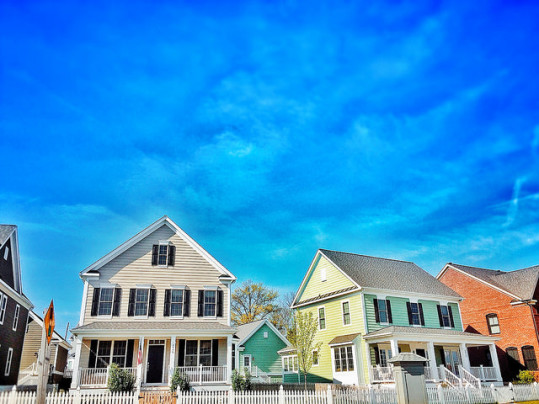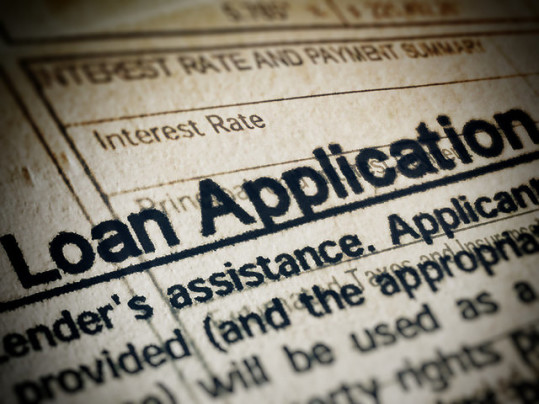A home sale isn’t official until the closing process has been completed and all the paperwork has been signed. However, that usually doesn’t happen until about a month after the buyer’s offer is accepted. In the meantime, the sale is considered pending. In other words, the home is under contract but not officially sold. But, though it hasn’t been made official, more often than not these pending sales end up being completed sales. For this reason, the National Association of Realtors’ Pending Home Sales Index is a good indicator of future home sales and current buyer activity. In February, the index registered a 5.5 percent increase and reached its second highest reading since May 2006. In other words, buyer demand has been strong in the weeks leading up to the start of the spring sales season. Lawrence Yun, NAR’s chief economist, says the results prove buyers are eager to get the season started. “Buyers came back in force last month as a modest, seasonal uptick in listings was enough to fuel an increase in contract signings across the country,” Yun said. In fact, sales rose in all four regions, with the strongest increases seen in the Northeast and Midwest – where unseasonably warm weather may have led to an earlier than usual start to the buying season. More here.
Archive for March 2017
Mortgage Rate Drop Is 1st In Three Weeks
The Mortgage Bankers Association’s Weekly Applications Survey has been conducted every week since 1990 and covers 75 percent of all retail residential mortgages. In other words, it’s a pretty reliable gauge of where mortgage rates and application demand are headed. According to their most recent release, mortgage rates fell last week across all loan categories, including 30-year fixed-rate loans with both conforming and jumbo balances, loans backed by the Federal Housing Administration, and 15-year fixed-rate mortgages. The decline brought rates to their lowest level in three weeks. Lynn Fisher, MBA’s vice president of research and economics, told CNBC markets were adjusting last week. “Markets adjusted expectations last week as attempts to repeal and replace the Affordable Care Act stalled and bond yields declined,” Fisher said. “This pushed mortgage rates down for the first time in three weeks.” But though average rates were down, demand for mortgage applications was relatively flat from the week before. In fact, overall mortgage application activity was down less than 1 percent from the week before. Still, demand for loans to buy homes – which is a good indicator of future sales – was up 4.8 percent over last year at the same time. More here.
The Truth About Affordability Conditions
If you’re like most home buyers, affordability is among your top concerns. After all, the first question you ask when deciding to buy a house is typically going to be whether or not you can afford it. So recent news reports showing mortgage rates and home prices on the rise may have you feeling like buying a house isn’t within your reach. But that’s not necessarily true, according to a new analysis from First American Financial Corp. Their Real House Price Index looks, not only at prices, but also at income and interest rate changes. In other words, it gives a fuller picture of how much buying power the average American has. The most recent results show that affordability conditions have actually improved lately. Mark Fleming, First American’s chief economist, says conditions aren’t as favorable as they were last year at this time but they’re still high when compared to historical norms. “While affordability is lower compared to a year ago, the level of affordability in most markets is still high by historical standards, which is why demand is expected to remain strong this spring,” Fleming says. In other words, affordability conditions may not be what they were last year but there are still opportunities to capitalize in today’s housing market. More here.
Some Simple Steps To A Greener Home
There are a variety of reasons you might want to make your home green. From allergies to energy bills, giving your home an environmentally minded upgrade can not only be better for your health and utility costs, it can also improve the value of your home when it comes time to sell. It is true, after all, that energy efficiency consistently ranks near the top of home buyers’ wish lists. The good news, if you’re considering steps to a greener home, is that there are many things you can do that aren’t necessarily expensive or all that time consuming. From smart technology to natural household cleaners, if you’re interested in a greener life, there are plenty of products and practices that can help you achieve it. According to Marla Esser Cloos, author of a new book published by the National Association of Home Builders, the key is incorporating new habits into your day-to-day life. “Living green has to be a blend of the stuff you buy and the things you do,” she says. “If each of us built five simple practices or changes in buying habits into our daily routines, we would all soon have our own everyday green homes – and we would change the world.” To get going, buy some energy-efficient light bulbs or start a garden, then work your way up to replacing your old windows and upgrading your insulation. No matter where you live or what your budget may be, there are things you can do today to begin making your home green. More here.
New Home Sales Surge In February
The U.S. Census Bureau and the Department of Housing and Urban Development’s monthly new residential sales statistics show sales of new homes rose 6.1 percent in February and are now 12.8 percent above last year’s figure. The numbers are an indication that sales may have begun improving before the official start of the spring season and at a time when mortgage rates were climbing. So what could be behind the surge in new home sales? Well, one possible reason for the spike is elevated buyer interest. From all accounts, buyer demand is quite high across the country. And those buyers may have simply been trying to beat the competition or lock in low rates before they rise any higher. In other words, market conditions may have convinced buyers that getting an early start would land them a better chance of finding the home of their dreams. Another explanation could be unseasonably warm weather in parts of the country that would normally still be in the grips of winter during the month of February. An exceptionally mild month could have helped lift sales in parts of the South, Midwest, and Northeast. Also in the report, the median sales price of new homes sold was $296,200. The average sales price was $390,400. More here.
Sales Numbers Show Homes Selling Quickly
Though the number of previously owned homes sold in February fell from the month before, homes sales are still up from one year ago. There’s also no shortage of interested home buyers, according to a new report from the National Association of Realtors. In fact, Lawrence Yun, NAR’s chief economist, says buyer traffic is stronger than last year and it’s leading to quick sales. “Realtors are reporting stronger foot traffic from a year ago, but low supply in the affordable price range continues to be the pest that’s pushing up price growth and pressuring the budgets of prospective buyers,” Yun says. “Newly listed properties are being snatched up quickly so far this year and leaving behind minimal choices for buyers trying to reach the market.” A closer look at the numbers shows that for-sale properties typically stayed on the market for 45 days in February – down from 59 days last year at the same time. In other words, until more homeowners decide to sell, buyers should be prepared to move quickly. Fortunately, though, the number of available homes for sale rose 4.2 percent last month and a recent survey found an increasing number of current homeowners who said they feel it’s a good time to sell. As more homeowners put their homes up for sale, the market should begin to balance and give buyers more opportunities. More here.
Average Mortgage Rates Mostly Steady Last Week
Demand for home loans dropped last week, according to new figures from the Mortgage Bankers Association. The MBA’s Weekly Applications Survey – which tracks mortgage rates and application demand – showed a 2.7 percent decline in the number of Americans requesting applications for home loans. This time, however, the drop wasn’t related to a significant increase in mortgage rates. In fact, average rates were unchanged for 30-year fixed-rate loans with conforming loan balances, down for jumbo loans, and up only slightly for FHA and 15-year fixed-rate loans. In other words, mortgages rates were relatively steady from the week before. However, they are up from where they were last fall. Because of this, Mike Fratantoni, MBA’s chief economist, says home buyers are beginning to turn to adjustable rate mortgages. “Home buyers in a strong housing market are looking for ways to extend their purchasing power and ARMs are one way to do that,” Fratantoni told CNBC. Last week, adjustable rate mortgages increased to 9 percent of total application demand. But though that’s the highest it’s been in nearly three years, it’s still far below what it was before the housing crash, when it hit a peak of 35 percent. The MBA’s weekly survey covers 75 percent of all retail residential mortgage applications and has been conducted since 1990. More here.







